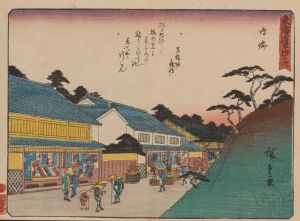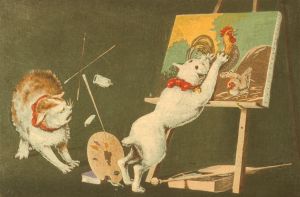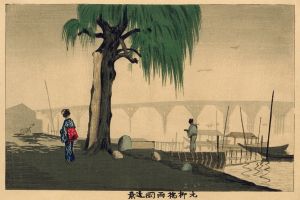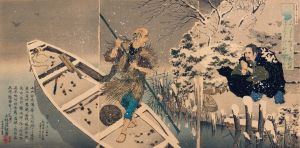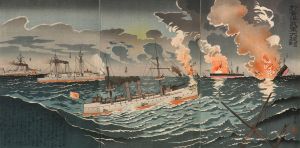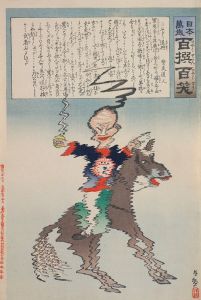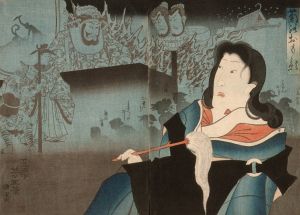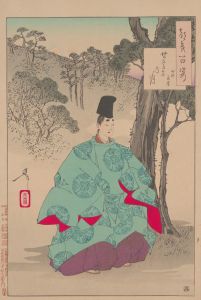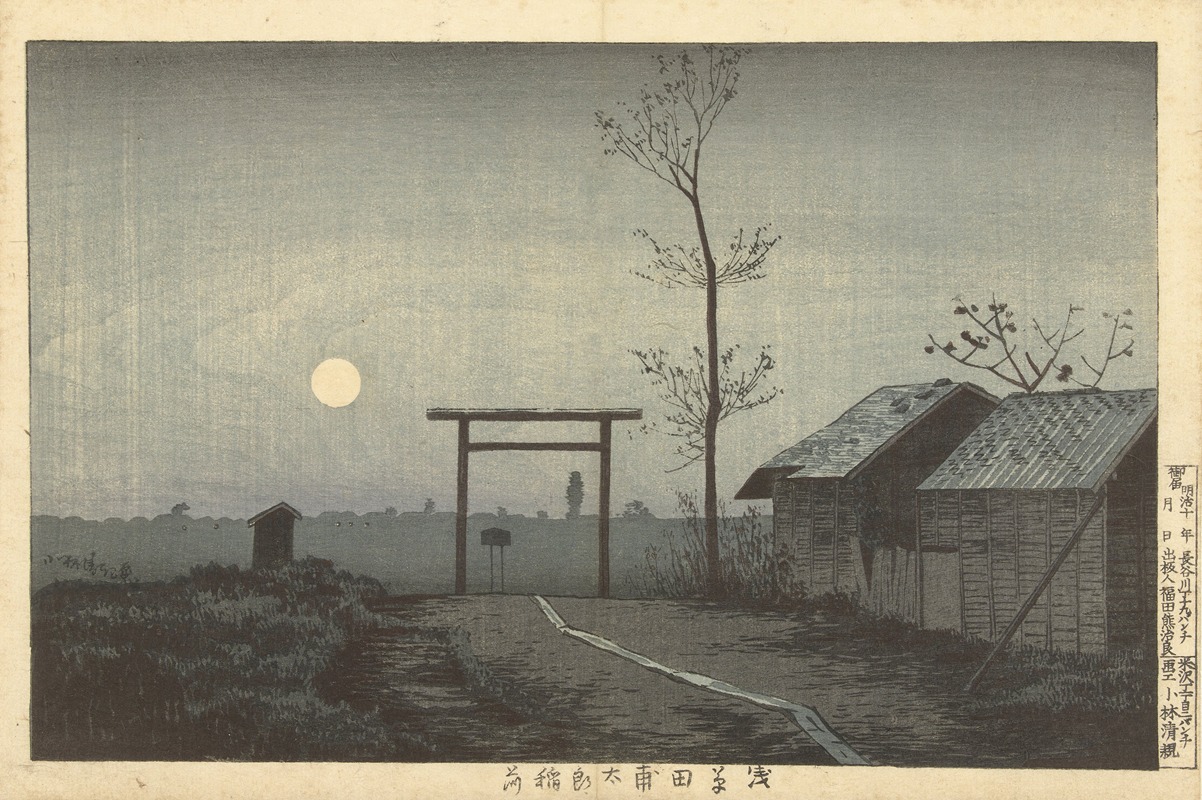
The Taro Inari Shrine In The Rice Fields At Asakusa
A hand-painted replica of Kobayashi Kiyochika’s masterpiece The Taro Inari Shrine In The Rice Fields At Asakusa, meticulously crafted by professional artists to capture the true essence of the original. Each piece is created with museum-quality canvas and rare mineral pigments, carefully painted by experienced artists with delicate brushstrokes and rich, layered colors to perfectly recreate the texture of the original artwork. Unlike machine-printed reproductions, this hand-painted version brings the painting to life, infused with the artist’s emotions and skill in every stroke. Whether for personal collection or home decoration, it instantly elevates the artistic atmosphere of any space.
Kobayashi Kiyochika (1847–1915) was a prominent Japanese artist known for his ukiyo-e woodblock prints and paintings, particularly during the Meiji era (1868–1912). His works often reflect the rapid modernization and Westernization of Japan during this period, blending traditional Japanese artistic techniques with influences from Western art, such as the use of perspective and shading.
One of Kiyochika's notable works is The Taro Inari Shrine in the Rice Fields at Asakusa (Asakusa Tanbo Taro Inari no Zu). This piece is part of his broader series of prints that depict scenes of Tokyo (formerly Edo) during the transformative Meiji era. The artwork captures the Taro Inari Shrine, a small Shinto shrine located in the Asakusa area of Tokyo, surrounded by rice fields. The composition highlights the coexistence of traditional Japanese rural landscapes and spiritual elements amidst the backdrop of a rapidly changing society.
Kiyochika's use of light and shadow in this piece is particularly striking, showcasing his mastery of atmospheric effects. The print likely employs a technique known as kōsen-ga (pictures of light rays), which Kiyochika is renowned for. This technique emphasizes the interplay of light and darkness, creating a dramatic and almost ethereal quality in his landscapes. Such stylistic choices reflect the influence of Western art, particularly photography and lithography, which were becoming increasingly popular in Japan during the Meiji period.
The Taro Inari Shrine itself holds cultural and religious significance as a site dedicated to Inari, the Shinto deity of rice, agriculture, and prosperity. Shrines like this one were common in rural areas, symbolizing the deep connection between agricultural practices and spiritual beliefs in traditional Japanese society. By situating the shrine within the rice fields, Kiyochika underscores this relationship while also documenting a way of life that was beginning to fade as urbanization and industrialization took hold.
This artwork is an example of Kiyochika's ability to document the changing landscapes of Tokyo while preserving elements of its historical and cultural identity. His works serve as both artistic expressions and historical records, offering insight into the Meiji era's complex interplay between tradition and modernity.
Today, Kiyochika's prints, including The Taro Inari Shrine in the Rice Fields at Asakusa, are celebrated for their technical innovation and historical significance. They are housed in various collections worldwide, including museums and private collections, where they continue to be studied and appreciated for their unique perspective on a pivotal era in Japanese history.





